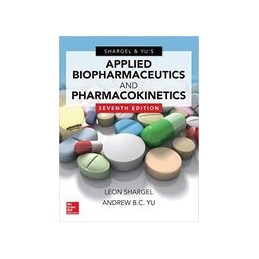- Obniżka


 Dostawa
Dostawa
Wybierz Paczkomat Inpost, Orlen Paczkę, DHL, DPD, Pocztę, email (dla ebooków). Kliknij po więcej
 Płatność
Płatność
Zapłać szybkim przelewem, kartą płatniczą lub za pobraniem. Kliknij po więcej szczegółów
 Zwroty
Zwroty
Jeżeli jesteś konsumentem możesz zwrócić towar w ciągu 14 dni*. Kliknij po więcej szczegółów
The landmark textbook on the theoretical and practical applications of biopharmaceutics and pharmacokinetics—now fully updated.
<?xml::namespace prefix = o ns = urn::schemas-microsoft-com::office::office />
The fields leading text for more than three decades, Applied Biopharmaceutics & Pharmacokinetics gets you up to speed on the basics of the discipline like no other resource. Practical problems and clinical examples with discussions are integrated within each chapter to help you apply principles to patient care and drug consultation situations. In addition, outstanding pedagogy, including chapter objectives, chapter summaries, and FAQs, plus additional application questions, identify and focus on key concepts.
Written by authors who have both academic and clinical experience, Applied
Biopharmaceutics & Pharmacokinetics shows you how to use raw data and formulate
the pharmacokinetic models and parameters that best describe the process of drug
absorption, distribution, and elimination. The book also helps you work with pharmacokinetic
and biopharmaceutic parameters to design and evaluate dosage
regimens of drugs. In the seventh edition of this must-have interactive learning tool, most
of the chapters are updated to reflect our current understanding of complex issues
associated with safe and efficacious drug therapy.
Opis
